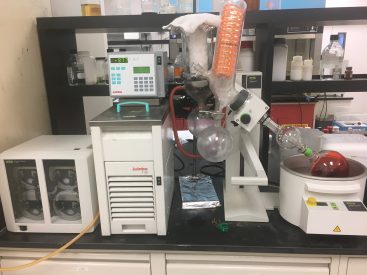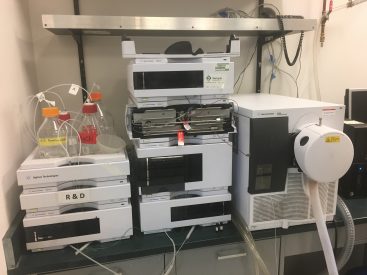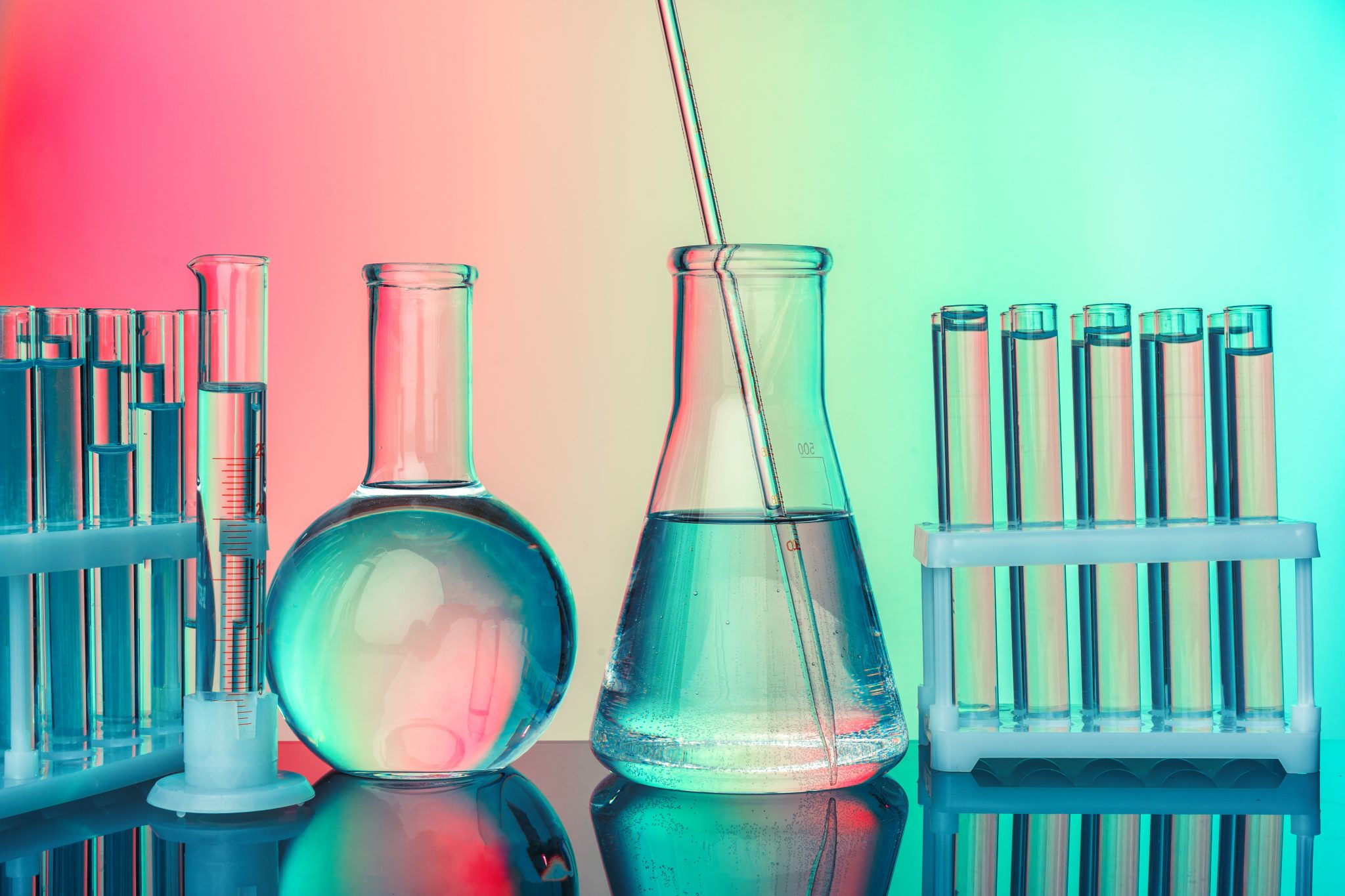Key Lab Instruments Used in Making Your Fluorescent Dyes
Bustling pumps, beeping monitors, and flashing red and green lights; you might feel like you’re stepping into a construction site rather than a lab.. Just like the toolbox of a construction worker with wrenches, levels, saws, etc., a chemist has a toolkit of their own. Our toolkit relies on a multitude of different machines doing all sorts of jobs, from the simple task of drying a thick red sludge into a powder, to identifying molecular mass using powerful magnets and complex equations. With the advent and progress of complex computing and specialized analytical techniques, instrumentation plays an ever increasing role in the laboratory.
A hundred years ago, chemists relied on senses, such as smell and sight, and crude analytical tests to identify compounds and determine the progress of reactions. Smell has been replaced by gas chromatography, sight replaced by UV-Vis spectroscopy, as well as a range of other analytical “senses” that we never thought quite possible back then. My college chemistry professor compared them to musical instruments; just as a perfectly tuned piano plays a specific note when a key is pressed, an instrument in the lab will produce a signal that corresponds to a particular chemical “input.” Years can be spent learning the ins-and-outs of analytical chemistry, so, before I lose you, let’s move on to a few of the machines and instruments we get to work with everyday.
When it comes to identification and testing purity, the LC/MS (Liquid Chromatograph/Mass Spectrometer) is king. A sample is injected, pure or crude, and the LC separates it into its constituent parts based on hydrophobicity (i.e. oil and water), and then analyzes each chemical’s spectral properties, like color. This allows us to determine purity, percent yield, or even to check if a reaction is working. Lastly, each constituent is passed off to the MS which gives the exact mass, allowing for exact identification of the molecule of interest. If we have something that isn’t very pure, we can process it in the flash chromatograph. This works like a large-scale liquid chromatograph, purifying up to tens of grams of material at a time. Besides mass spectrometry, infrared and UV-visible spectroscopy are used to identify compounds, differentiating them by the colors they absorb and reflect.
Not everything in the lab is so complex; many machines do simple tasks. The rotovap, short for rotary evaporator, is the workhorse of the lab, with as many in our lab as chemists. It’s basically an elaborate distiller, with a way to constantly stir the solution, a cooling tower, and a way to recover solvent. Our chemists use these – alongside the high vacuum pumps, which get to less than 1/10000th of atmospheric pressure – in order to dry our compounds as much as possible. There are also meticulously calibrated scales and balances, some going to the nearest hundredth of a milligram, as well as freezers, heaters, and refrigerators that keep everything at just the right temperature.
While we have many more complex and fascinating instruments, these are a few of our chemist’s favorite tools. The instruments described are important pieces in the larger puzzle that makes up the laboratory. Together, they work together to synthesize your fluorescent dyes from start to finish, creating a scientists dream toolkit to track the progress of their own experiments.









